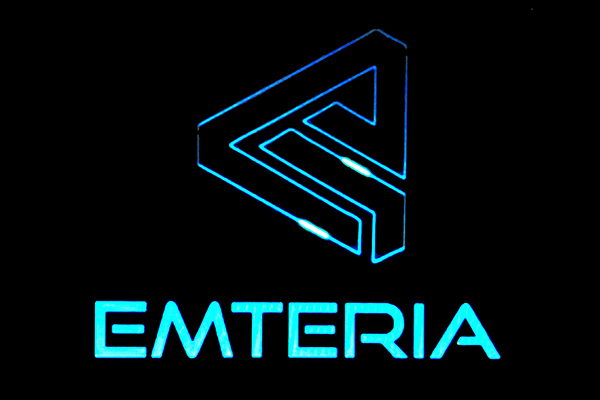From ChatGPT and DeepSeek to autonomous vehicles and intelligent security systems, artificial intelligence has rapidly evolved into a cornerstone of digital innovation. But while breakthroughs in algorithms get the spotlight, the reality is that these models rely on equally powerful hardware to run efficiently.
Traditional CPUs, even the most powerful ones, struggle to handle the massive parallel processing requirements of today’s deep learning workloads. That’s where AI accelerator modules come in—specially designed hardware systems that supercharge AI training and inference. These modules are reshaping computing infrastructure from cloud data centers to embedded edge devices.
What Is an AI Accelerator Module? A Quick Breakdown
An AI accelerator module is a compact, integrated hardware unit designed to perform artificial intelligence computations with high efficiency and low latency. It typically includes:
- Processing Units: Specialized processors like NPUs (Neural Processing Units), GPUs (Graphics Processing Units), FPGAs (Field Programmable Gate Arrays), or ASICs (Application-Specific Integrated Circuits).
- High-Speed Memory: Modules often use High Bandwidth Memory (HBM) or LPDDR to reduce bottlenecks.
- Interconnect Interfaces: Such as PCIe, CXL, or Ethernet to link with host processors or networks.
- Power Management Systems: Advanced mechanisms dynamically manage energy use for optimized performance-per-watt.
AI modules are available in various form factors (M.2, PCIe cards, SoMs) and are designed to plug into existing platforms to accelerate specific AI workloads.

Core Architectures: NPU, GPU, FPGA, ASIC — Who Does What?
Different AI tasks require different acceleration strategies. Here’s how each architecture plays its role:
- NPU (Neural Processing Unit): Tailored for deep learning workloads, NPUs provide massive parallelism for matrix operations. They are efficient in CNNs, RNNs, and transformer-based models, making them ideal for both training and inference.
- FPGA (Field Programmable Gate Array): Offers reconfigurability, allowing developers to fine-tune the hardware for specific inference tasks. FPGAs shine in low-latency, deterministic environments like financial trading or edge AI.
- ASIC (Application-Specific Integrated Circuit): Designed for one task only, ASICs deliver unmatched efficiency and throughput. Examples include Google’s TPU and Hailo-8 ai accelerator, which are optimized for inferencing.
- GPU (Graphics Processing Unit): Originally developed for rendering graphics, GPUs are now the workhorses of AI training due to their high number of cores and robust software ecosystems.
Each architecture has trade-offs in flexibility, performance, and cost. The right choice depends on the specific application scenario.
How AI Accelerator Modules Work
AI workloads such as image classification, speech recognition, and language generation rely heavily on matrix multiplications and tensor operations. Accelerator modules handle these tasks by:
- Executing operations in parallel using thousands of compute cores
- Minimizing latency with dedicated pathways for key operations like convolutions
- Optimizing data flow, ensuring memory bandwidth is fully utilized
This modular approach allows AI workloads to be offloaded from general-purpose CPUs, freeing up system resources and drastically improving throughput and energy efficiency.
High-Speed Interfaces: Feeding the Beast
Fast processors are meaningless without a fast pipeline to deliver and retrieve data. High-speed interconnects like PCIe (Peripheral Component Interconnect Express) and CXL (Compute Express Link) are crucial in linking accelerator modules to the rest of the system.
For example, PCIe 6.0 provides up to 256 GB/s (x16 bidirectional) of data bandwidth, allowing AI accelerators to ingest massive datasets in real time. This is particularly important in applications like:
- Autonomous vehicles that must fuse video, LiDAR, and radar inputs within milliseconds
- AI-powered cameras analyzing 4K video streams at the edge
- NLP models processing long prompts with real-time response expectations
As models grow and input data scales, interconnect performance becomes a major design priority.
Key Applications Driving Demand
AI accelerator modules are powering innovation across industries:
Data Centers and Cloud AI
Hyperscalers like Google, Amazon, and Microsoft use thousands of AI accelerator modules to train and deploy foundation models. Efficiency, scalability, and thermal management are critical.
Autonomous Vehicles
Real-time inference for object detection, path prediction, and sensor fusion requires extreme performance and fail-safe reliability — a natural fit for specialized ASIC or FPGA-based modules.
Medical Imaging
AI accelerators help radiologists detect anomalies faster and with higher precision by enabling high-speed pattern recognition on CT, MRI, and ultrasound images.
Smart Cities
From license plate recognition to predictive analytics in city infrastructure, AI modules enable real-time decisions that improve safety and efficiency.
Edge and Embedded AI
Retail cameras, smart traffic systems, and industrial robots all rely on embedded modules (like Geniatech ) to process AI workloads on-device, where power and space are limited.

Technology Trends and What’s Coming Next
The AI accelerator landscape is evolving rapidly. Key trends include:
- Chiplet and Multi-die Architectures: Splitting functions across multiple silicon dies interconnected by high-speed links.
- 3nm and Beyond: Shrinking process nodes allow more compute per watt and higher integration.
- CXL 3.0: Extends memory sharing and cache coherence across devices and accelerators.
- Open AI Hardware (e.g., RISC-V): Growing interest in custom silicon based on open instruction sets.
- Focus on Energy Efficiency: Designers now optimize for TOPS-per-watt, especially in edge and mobile applications.
These innovations aim to solve the power, latency, and cost challenges of deploying AI everywhere.
Design Considerations and Challenges
Building a high-performance AI module isn’t just about compute power. Engineers must consider:
- Thermal Design: Compact modules generate heat rapidly — cooling solutions must be optimized.
- Signal and Power Integrity: With data moving at tens of gigabits per second, layout and material choices matter.
- Software Stack Compatibility: Accelerators must support standard AI frameworks (TensorFlow, PyTorch, ONNX), which requires dedicated drivers and compiler toolchains.
Balancing performance, cost, and power within strict form factor constraints remains a key challenge, especially in embedded systems.
Conclusion: The Future Is Modular, Intelligent, and Accelerated
AI accelerator modules are more than just powerful processors — they are the enablers of real-world artificial intelligence. From massive LLMs in the cloud to AI cameras on the edge, these modules are driving the next generation of innovation.
As applications grow more complex and demand real-time intelligence, expect continued growth in specialized hardware, modular deployment, and ecosystem-level optimization. AI without accelerator modules is like software without a processor — inert and potential unrealized.
In the age of intelligent machines, hardware matters more than ever — and accelerator modules are leading the way.

